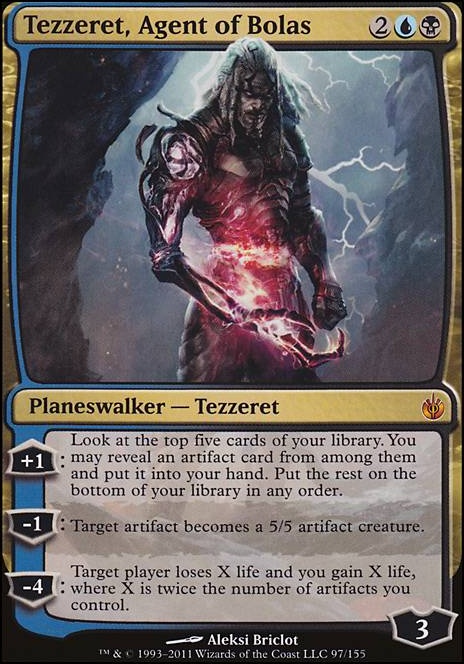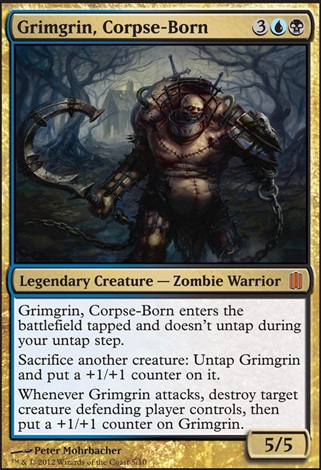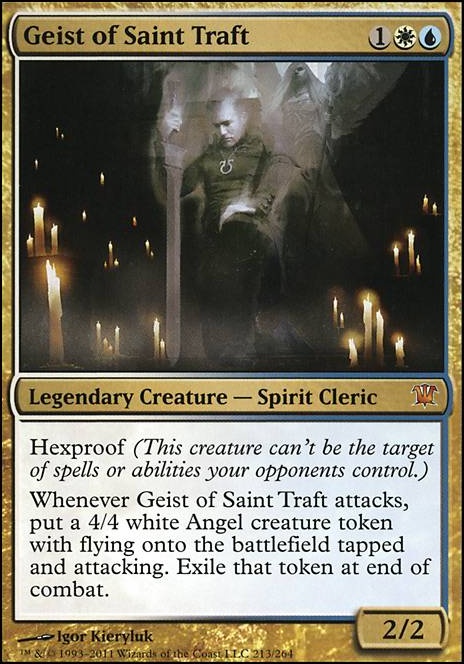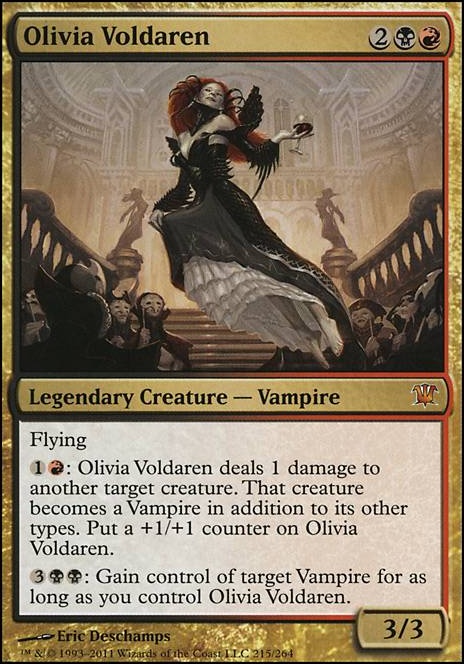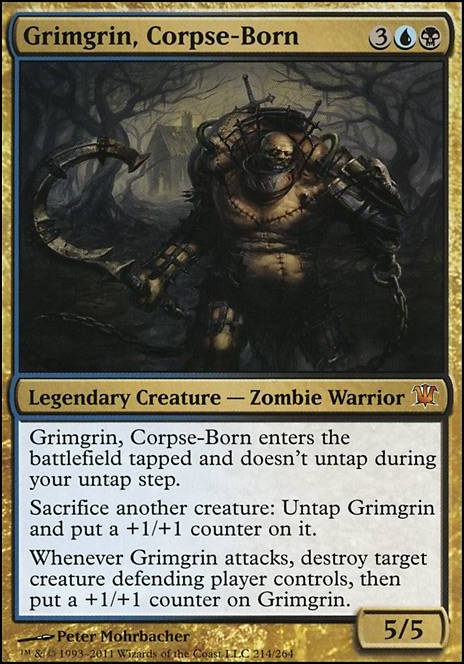Playstyle Rules of Thumb
This deck is political in nature and reactionary, I cannot emphasize this enough. You don't want to be casting spells for the sake of casting spells. Decisions should be deliberate and as optimal to the context of your position in the game as possible.
This is also control deck, you need to pay attention to how many cards everyone has, what deck types they're playing, and who is likely to pose the biggest threat. Additionally, you need to pay special attention to mitigating their card advantage, this gives you advantage.
As a last point, you should really try to preserve your graveyard. Expending a counterspell or two to keep your graveyard intact is worth it 100 times over.
Opening Hand & Mulligans
Regardless of the mulligan rules your group plays by, it is very important to try to mulligan for one of the card advantage elements in the deck. Worst case scenario, take a hand that has at minimum two lands covering both colors and some general utility. I strongly advise you not to keep a hand with a single land and a mana rock like
Sol Ring
. The only exception to this being in the event you have
Sensei's Divining Top
, or
Dark Confidant
if your land provides access to black mana.
The deck functions its best when you have consistent card draw and optimally when you get it on the board as early as possible. While the deck will still play well regardless, this point cannot be understated.
Early Game
This deck should almost never be played aggressively in the early game. I'll touch on some exceptions, but in general the deck does best by playing a passive role until mid to late game (even then you're likely going to want to play relatively passive). Your mindset should be geared towards gaining gradual advantage and reserving mana for counterspells. In the context of my playgroup, it's often best if you try to keep at least two counterspells in hand and the mana to use them available.
The exceptions to aggressive play are contingent on you getting a pretty ridiculous opening hand, or in the event you start the game with sufficient mana/mana rocks to cast Grimgrin and you have
Minamo, School at Water's Edge
in the opening hand. In this case you want to drop Grimgrin ASAP, get the summoning sickness out of the way, and start controlling the creature presence on the board. This isn't to say that you should just remove any creature because you can, you want to be deliberate about removing genuine threats, or creatures that provide a lot of advantage (e.g. any creature giving them card advantage). Additionally, I tend to focus on removing the creatures of the players that consistently pose the biggest threat in games. Lastly, if the creatures on the board aren't a threat, or don't provide ridiculous utility, just hold Grimgrin in reserve. I prefer using Minamo on the preceding player's end-step anyway.
While this is also viable with
Gravecrawler
I would recommend doing so with caution. Even though the infinite-combo isn't the easiest to get out, or resolve, you want to try to avoid risking
Gravecrawler
getting exiled.
I've noticed that there's little harm casting Grimgrin early game even when you cannot untap him. He will no longer have summoning sickness, and in some cases it may be advantageous to tutor up either
Minamo, School at Water's Edge
or
Gravecrawler
. I will usually do this when I have a frustratingly slow start and it's imperative that I make impact. Otherwise I'll do this when everyone else is having an especially slow start and it will allow me to deter creature casts or manage the presence of creatures on the board.
In the event you have a player struggling with mana fixing in the early game, specifically if they're missing a color, I always advocate using either
Strip Mine
to remove the color (assuming it's the only access they have), or using
Stifle
to hinder a fetch land trigger and prevent their mana fixing of the given color. It's usually going to favor you to have at least one opponent you don't really have to worry about, even if it's only for a few turns. Caveat: This also depends on the demeanor of the player, some people play vindictively and you may want to opt out of such a decision if you know they're likely to retaliate. I generally don't like it when people play vindictively because they lose sight of trying to win the game and make sub-optimal decisions.
Mid-Game
The mid-game is characterized by watching your opponent's hands and board states closely to best determine who represents the biggest threat. Shortly after the early game, you'll usually see one to three players really pop-off. Your job is to enable the rest of the players to deal with the biggest threat. Otherwise you must address it directly in the event everyone else has no options (ususally by means of counterspells and control effects). Usually, you'll be helping by ensuring a spell resolves that directly impacts the board-leader, or by throwing little curves at them and hampering their ability to retain advantage. Worst case scenario, you'll have to address a potential combo. If you see an opponent setting up the pieces for a combo and you have no options in hand I strongly recommend using your tutors as response mechanisms to address their threat, or other drastic changes and threats in the game.
This is also the stage of the game where opponents have a decent board state. You will almost never have to worry about an opponent's creature-heavy board presence. You should hold on to
Cyclonic Rift
for responses to an opponent attempting to swing you to death (or an equally reasonable moment). This is the reactionary method of dealing with creatures, ideally used when all your opponents have a decent number of permanents (puts them back a few turns). However, my preference, and one of my all time favorite pet card, is
Massacre Wurm
. This card is amazingly effective in the mid-game and onward, given the number of recursion effects in the deck coupled with Grimgrin as a sacrifice outlet allows you to get his ETB trigger to resolve as many as 5-6 times (this is obviously conditional on your hand/graveyard. So too can you copy Wurm with
Phyrexian Metamorph
.
If you have the largest and most threatening board presence at this point in the game, you ought to have Grimgrin out and swinging. Prioritize removing creatures that have significant impact on the game, but, if possible, attempt to allocate the damage to a single player if at all possible. This keeps you from taking too much heat and allows you to remove players one at a time without expending spells unnecessarily.
Late-Game
Things may be tenuous at this point in the game, you need to play it carefully if you haven't already cemented your position and established a threatening board-presence. This is where certain nasty combo's are likely to manifest for you.
You'll have likely expended a number of decent cards at this point, giving you a tasty graveyard. When the moment is opportune you'll want to attempt casting cards like
Yawgmoth's Will
. While its ideal use is instant speed, this assumes that you'll have
Leyline of Anticipation
out. Regardless, you'll likely have a number of one-time-use Ramp effects and Mana Rocks in your graveyard (
Lotus Petal
,
Dark Ritual
,
Mana Vault
, etc.). Using these to pull out big combos allows you to push your opponents into a corner as they likely have fewer options and cards in hand than you at this point. Worst case scenario you may have Yawgmoth's in your graveyard (due to discard or mill effects), however, you'll still have options to cast it with
Snapcaster Mage
and
Mission Briefing
.
Additionally, this will allow you to cast your zero-drop or alternative cost counterspells from your graveyard to thwart anyone attempting to prevent you from comboing out, or just popping-off. This means that even if
Rooftop Storm
and
Blood Artist
are in your graveyard, you can still clutch out your infinite. Even if you don't have all the pieces to the combo, the likelihood that you have tutor(s) in graveyard and
Sensei's Divining Top
on the board or graveyard is pretty high. This means you have a wealth of options for comboing out.
You may not be in such a position to combo out with the win at this point, in which case you'll want to defer to the playstyle of the early to mid-game. Playing politically into the end game allows you to build up your graveyard options and advantage until you have the opportunity to combo out, or simply wear your opponents down. This conditions are admittedly more stressful, but equally interesting as they test your ability to utilize the deck and your opponents strengths and weaknesses to garner positional advantage.
Parting Thoughts
Since this is my first attempt at explaining how to pilot the deck, I imagine there are plenty of things that I did not address. I'd love to improve the current explanation and hope that any questions people have are directed to me in the comments. I'll do my best to update this section accordingly.
